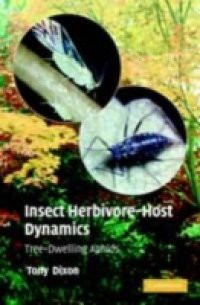Literature on the population dynamics of insect herbivores tends to favour a top-down regulation of abundance, owing much to the action of natural enemies. Originally published in 2005, this volume challenges this paradigm and argues that tree-dwelling species of aphids, through competition for resources, regulate their own abundance. The biology of tree-dwelling aphids is examined, particularly their adaptation to the seasonal development of their host plants. When host-plant quality is favourable, aphids, by telescoping generations, can achieve prodigious rates of increase which their natural enemies are unable to match. Using analyses of long-term population censuses and results of experiments, this book introduces students and research workers to insect herbivore-host dynamics using the interaction between aphids and trees as a model.

